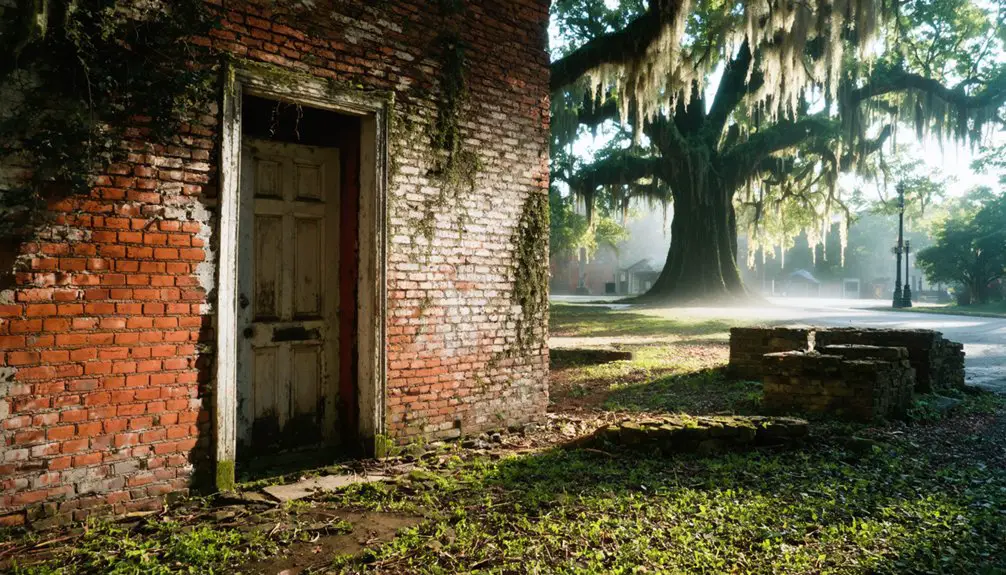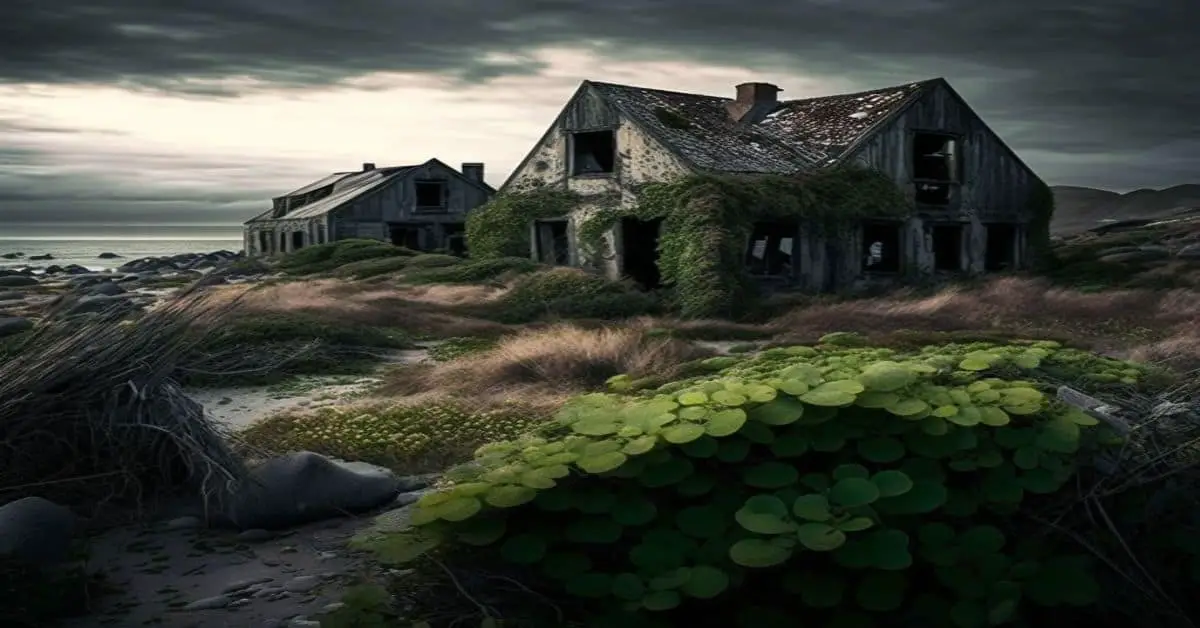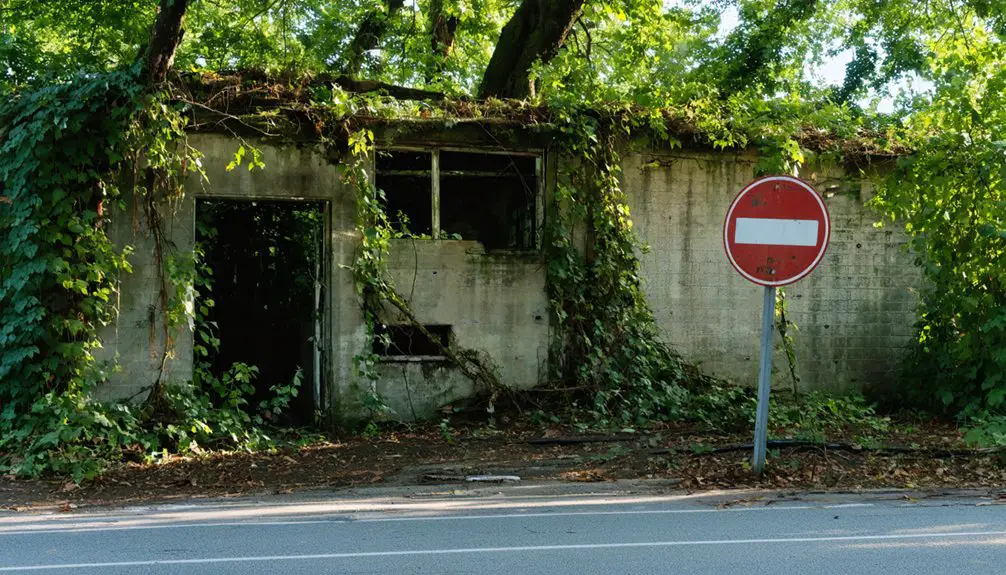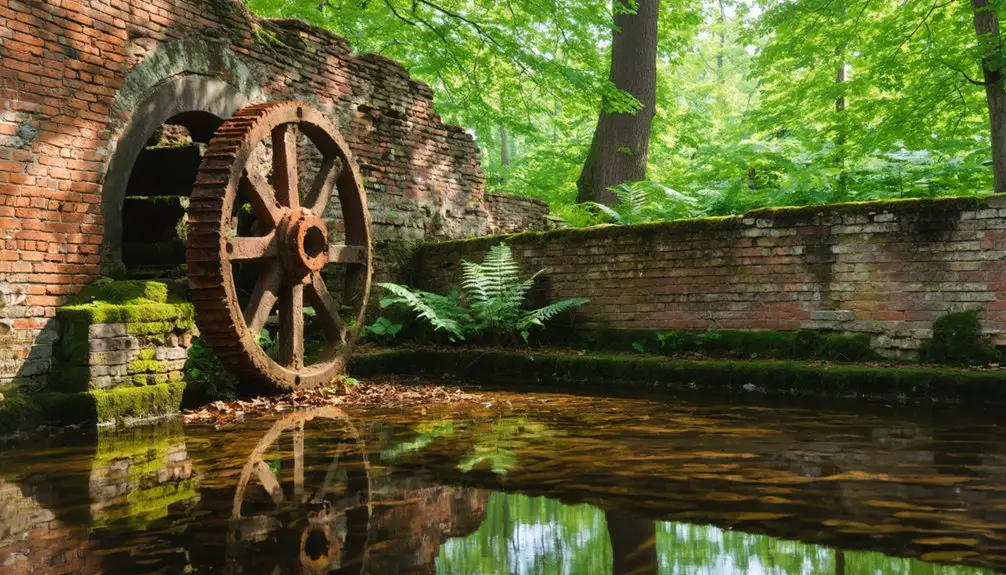You’ll discover Ca Ira’s fascinating transformation from a small 1796 settlement named after a French revolutionary song to a booming 1830s tobacco trading hub along Virginia’s Willis River. The town flourished with 40 dwellings, multiple stores, and annual sales reaching $40,000 before declining into Cumberland County’s most intriguing ghost town. Today, only the stunning Grace Episcopal Church remains standing, its Classical Revival architecture hinting at Ca Ira’s remarkable past and untold stories.
Key Takeaways
- Ca Ira, Virginia was a thriving 19th-century town with 310 residents, 40 dwellings, and multiple stores before declining into a ghost town.
- A stagnant pond caused widespread illness, leading to recurring depopulation and eventual abandonment of the once-bustling community.
- Grace Episcopal Church remains the most significant surviving structure, now serving as a historical landmark with protected status.
- The town’s economic peak occurred after the 1825 Willis River canal completion, with annual mercantile sales reaching $40,000.
- Most original buildings have vanished, leaving only remnants of the former tobacco trading hub established in 1796.
The French Revolutionary Connection
While many Virginia towns adopted traditional English names, Ca Ira emerged in 1796 with a distinctly French revolutionary identity, taking its name from the popular marching song “Ça Ira” (“it will go” or “it’ll be fine”).
You’ll find that Ca Ira’s naming wasn’t a random choice – it reflected Virginia’s deep enthusiasm for the French Revolution during the 1790s. The French ideals of liberty and progress resonated powerfully throughout post-Revolutionary America, and nowhere was this more evident than in Cumberland County’s newest settlement.
Revolutionary influence shaped not just the town’s name but its very spirit, symbolizing the community’s optimism about republican values. The phrase itself gained prominence when Benjamin Franklin frequently used it during the American Revolutionary War. This French connection stands unique among Virginia towns, highlighting a remarkable period when cultural affinity toward France helped shape the American landscape.
From Unhealthy Pond to Thriving Trade Hub
Before Ca Ira could prosper as a trade center, the town faced a critical environmental challenge in the form of a large stagnant pond that caused widespread illness among its inhabitants.
You’d have seen dramatic cultural influences emerge after the pond’s removal and the Willis River canal’s completion in 1825, which transformed Ca Ira into a vibrant tobacco trade hub.
The economic shifts were remarkable – the town quickly developed into a bustling center with 40 dwellings, three mercantile stores, and various skilled trades. Like many Virginia towns, Ca Ira’s prosperity was built on tobacco farming fortunes.
Ca Ira blossomed into a dynamic commercial hub, boasting dozens of homes, merchant shops, and a diverse array of trades.
By 1836, you would’ve found a thriving community of over 300 people, complete with taverns, a masonic hall, and regular mail service.
The combination of improved health conditions and enhanced river transportation had released Ca Ira’s full commercial potential.
Life Along the Willis River
As the Willis River meandered through Cumberland County, Virginia, Ca Ira’s strategic location along its banks shaped every aspect of daily life.
You’d find a bustling community of 40 dwellings where river navigation drove commerce and culture. At the heart of town, three mercantile stores, a merchant mill, and a tobacco warehouse kept the economy humming, while two taverns provided refuge for weary traders.
Community events centered around the Masonic hall and the non-denominational church, where you’d encounter blacksmiths, wheelwrights, tailors, and plough manufacturers going about their daily business.
The local bank served as proof of Ca Ira’s prosperity, while the tobacco warehouse connected local farmers to Richmond and Petersburg’s lucrative markets via the Willis River’s essential trade route.
The Golden Age of Commerce
With the completion of the Willis River canal in 1825, you’d find Ca Ira transforming into a bustling tobacco trade center serving Prince Edward and Charlotte counties.
By 1836, you could spot 40 dwellings, three general stores, and a merchant mill among the town’s growing commercial infrastructure, with three weekly mail deliveries keeping business connections strong.
You’d encounter a thriving merchant class capitalizing on the canal access, as evidenced by the presence of specialized craftsmen like wheelwrights and blacksmiths, alongside critical commerce facilities such as warehouses and taverns.
Tobacco Trade Hub Success
During its golden age between 1827 and 1860, Ca Ira emerged as an essential tobacco trade hub along the Willis River, generating annual mercantile sales of up to $40,000.
You’d find the town’s tobacco warehouse bustling with activity as it connected Prince Edward and Charlotte Counties to Richmond and Petersburg’s larger markets. The completion of the Willis River canal in 1825 revolutionized the tobacco economy, replacing stagnant ponds with efficient water transport routes.
Local merchants and Scottish factors kept trade networks flowing by advancing payments to planters and coordinating shipments via bateaux and larger vessels. The trade system mirrored earlier practices from when John Rolfe first shipped tobacco to England, establishing Virginia’s centuries-long dominance in the market. Merchants often struggled with debt when soil depletion forced planters to abandon fields and seek new cultivation grounds.
Virginia’s strict quality control laws guaranteed that only premium tobacco passed through Ca Ira’s warehouse, maintaining the town’s reputation as a reliable trade center in the region’s thriving agricultural commerce.
Canal Opens New Markets
Once the Willis River Canal opened in 1825, Ca Ira’s commercial prospects expanded dramatically through new transportation routes linking Cumberland County’s agricultural heartland to Virginia’s major markets.
You’d have seen a remarkable transformation as the canal enabled efficient movement of agricultural goods, with freight tonnage soaring to over 100,000 tons annually by 1849-1850.
The James River Company invested heavily in maintaining and improving the canal infrastructure, ensuring reliable transport for local goods. The canal revolutionized tobacco production by giving local farmers direct access to Richmond and Petersburg markets.
You could’ve witnessed Ca Ira emerge as a crucial export hub, where improved market access sparked the growth of supporting industries – from mercantile stores to tobacco warehouses. By 1836, the thriving community boasted forty residential homes and numerous commercial buildings.
The removal of stagnant ponds along the canal route also enhanced living conditions, helping sustain the workforce needed for this bustling trade network.
Thriving Merchant Community
The establishment of Ca Ira’s merchant district in 1796 marked the beginning of a vibrant commercial era that would define the town’s golden age.
You’d find merchant strategies focused on serving both local farmers and travelers, with three stores and two taverns operating by 1836.
The community dynamics centered around essential trading facilities, including a tobacco warehouse, sawmill, grist mill, and three blacksmith shops.
A Day in 1830s Ca Ira
As you’d walk through Ca Ira’s bustling marketplace in the 1830s, you’d find yourself among townspeople bartering at three mercantile stores, farmers delivering tobacco to the warehouse, and craftsmen busy at their trades from blacksmithing to wheelwright work.
The Willis River Canal completion in 1825 had transformed Ca Ira into a major trading hub for the region.
You’d notice the steady rhythm of community life marked by the thrice-weekly mail deliveries and the comings and goings at the two taverns.
The non-denominational church and Masonic hall would serve as your primary social gathering spots, where you’d join the town’s 310 residents for worship services and community meetings.
Daily Market Activities
Market days in 1830s Ca Ira bustled with activity centered around three primary locations: the tobacco warehouse, merchant stores, and artisan workshops.
You’d find farmers hauling their prized tobacco to the warehouse, where market transactions determined prices before shipment along the Willis River to Richmond or Petersburg.
At the merchant stores, you’d witness a lively barter economy as locals traded farm goods for household necessities.
Meanwhile, the town’s skilled craftsmen – two blacksmiths, two wheelwrights, and two plough manufacturers – kept busy repairing essential farm equipment and crafting new tools.
You could hear the rhythmic clanging from the blacksmith shops and the steady hum of the merchant mill processing local grains, while wagons rolled in along Virginia State Route 632, bringing fresh goods for trade.
Social and Religious Life
Beyond the daily commerce and trade, social life in 1830s Ca Ira centered around two prominent institutions: Grace Episcopal Church and a bustling Masonic hall. You’d find religious diversity with both Episcopal and non-denominational worship services, while community gatherings flourished at the town’s three mercantile stores and two taverns.
The social fabric of this 310-person community was woven through:
- Weekly church services at Grace Episcopal, designed by Jefferson’s associate Dabney Cosby
- Regular Masonic meetings that connected local businessmen and leaders
- Informal gatherings at taverns where you’d hear the latest news from tri-weekly mail deliveries
After the removal of a harmful pond in 1825, improved health conditions allowed for more stable social interactions, strengthening the bonds between townspeople through religious and civic activities.
Environmental Challenges and Solutions
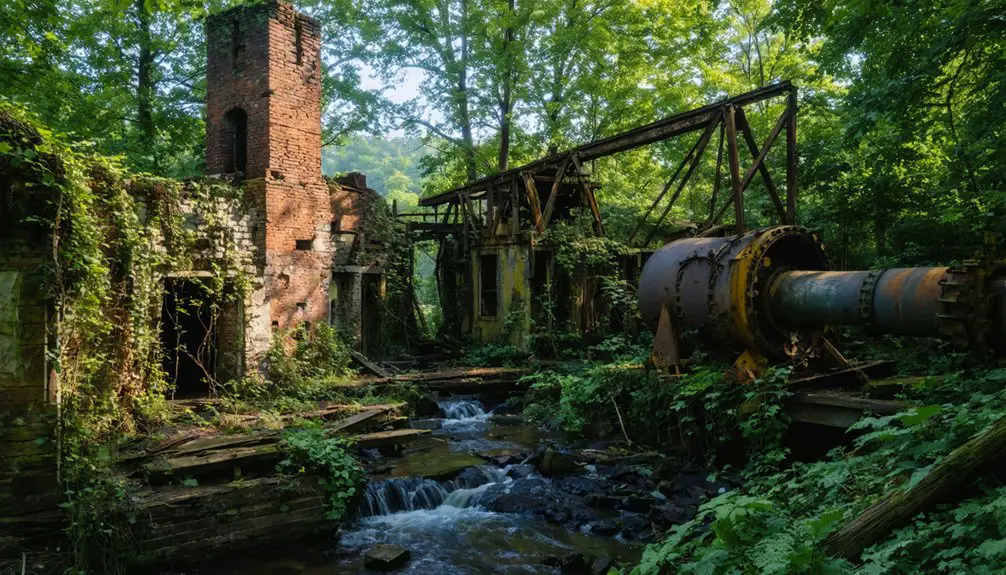
Three major environmental challenges shaped Ca Ira’s decline and eventual abandonment. The historical pond’s stagnant water caused widespread illness, while poor water management led to recurring depopulation. Similar to ghost town decay elsewhere, nature gradually reclaims these forgotten places. When the primary industry failed, families were forced to relocate to find new economic opportunities.
You’ll find the Willis River canal’s construction altered local ecosystems, though it initially boosted tobacco trade. Most critically, decades of environmental degradation have left buildings beyond repair, with invasive species and vegetation accelerating their decay.
Conservation strategies remain limited due to restricted access via 2WD roads, hampering ecological restoration efforts. Without proper preservation funding and community involvement, the ghost town’s historical preservation faces mounting challenges.
Local biodiversity has reclaimed the area, transforming former settlements into Virginia scrubland. Any landscape restoration would require thorough water management and careful removal of destructive plant growth.
Architecture and Town Layout
Ca Ira’s construction techniques relied heavily on locally sourced materials, with Flemish-bond brickwork crafted by enslaved artisans defining structures like Grace Church, the town’s sole surviving building.
You’ll find evidence of the town’s original grid pattern along Virginia State Route 632, where Ca Ira’s forty dwellings, commercial buildings, and public spaces once stood near the Willis River.
The layout incorporated essential elements of a thriving rural Virginia town, including tobacco warehouses, mills, taverns, and craftsmen’s shops positioned to maximize access to transportation routes.
Building Materials and Methods
While classical architecture dominated Virginia’s antebellum landscape, Ca Ira’s buildings showcased a distinctive blend of local craftsmanship and pattern book influences.
You’ll find masonry styles like Flemish-bond brickwork in Grace Church, where Valentine Parrish directed both enslaved artisans and free craftsmen in building techniques derived from Jeffersonian principles.
The town’s construction methods reflected regional practicality and available materials:
- Load-bearing brick walls used locally sourced materials and lime-based mortar
- Timber framing incorporated hardwoods from nearby forests
- Gothic Revival windows featured wooden muntins with pointed arches
These building practices weren’t just functional – they represented the intersection of traditional craftsmanship and emerging architectural trends, as seen in designs adapted from Asher Benjamin’s pattern books and executed through skilled local labor.
Town Grid and Planning
Beyond its distinctive architectural elements, the formal layout of Ca Ira emerged in 1787 as a demonstration of late 18th-century Virginia town planning principles. The town design featured a straightforward grid pattern typical of antebellum Southern communities, with streets arranged to facilitate commerce and daily movement.
At the heart of Ca Ira’s layout stood Grace Episcopal Church, designed by Jefferson’s associate Dabney Cosby, reflecting the period’s emphasis on positioning religious structures as central focal points.
The town’s grid patterns accommodated both residential and commercial zones while following classical architectural ideals of symmetry and order. Though no detailed maps from Ca Ira’s early period survive, records from 1869 indicate a practical arrangement of streets, with unpaved roads connecting homes, shops, and public spaces around the church grounds.
The Last Standing Grace Church
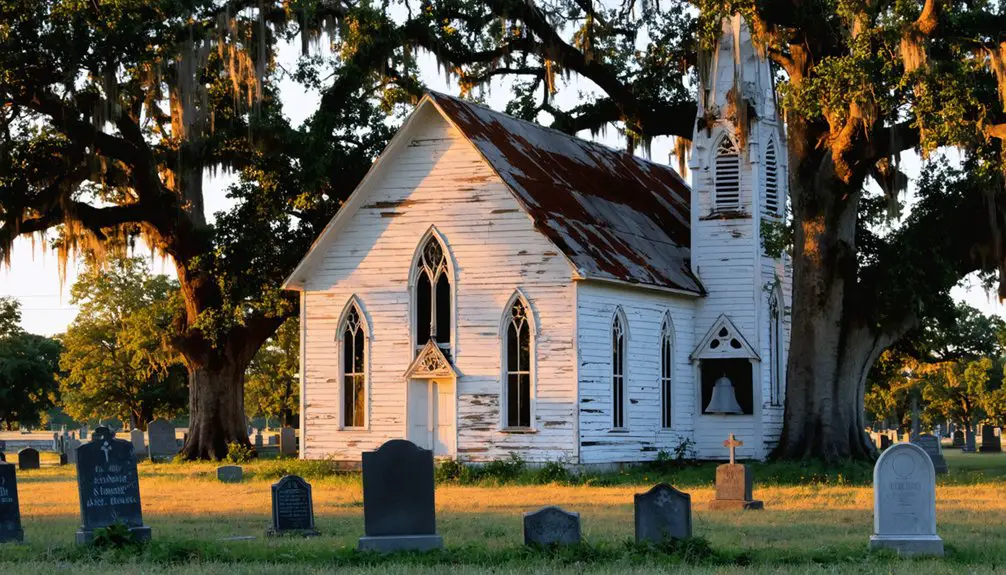
The last surviving proof to Ca Ira’s former glory stands in the form of Grace Church, an architectural masterpiece built between 1840-1843 by master builder Valentine Parrish.
With its unique blend of Roman, Greek, and Gothic Revival elements, the church’s architectural details showcase Virginia’s Classical Revival tradition through exquisite Flemish-bond brickwork and temple form design.
The church’s community significance extends beyond its physical presence, as it:
- Revitalized the dormant Littleton parish
- Served as a spiritual center for Ca Ira’s thriving tobacco and milling community
- Remains the sole witness to the village’s prosperous past
You’ll find a historic cemetery behind the church, overlooking Ca Ira pond and the Willis River, where distinguished veterans rest among the wooded hills.
Today, the church continues as a preserved shrine under the Episcopal Diocese of Southern Virginia‘s stewardship.
Post-Civil War Transformation
Following the prosperity of Ca Ira’s antebellum years, when Grace Church stood as a symbol of local wealth, dramatic post-Civil War changes transformed this once-bustling tobacco hub into a ghost town.
You’ll find that economic shifts hit Ca Ira particularly hard after 1865. The population plummeted from 310 residents as the tobacco trade collapsed and the Willis River canal lost its significance.
Despite attempts at community resilience, the emancipation of enslaved workers disrupted the plantation economy that had sustained the region. By 1906, you’d have seen only a handful of stores, a post office, and scattered residents in what was now called a “post hamlet.”
The town’s decline reflected broader Southern transformations – from changing transportation routes to agricultural restructuring – leaving Ca Ira’s once-thriving streets largely abandoned.
Preserving Ca Ira’s Memory
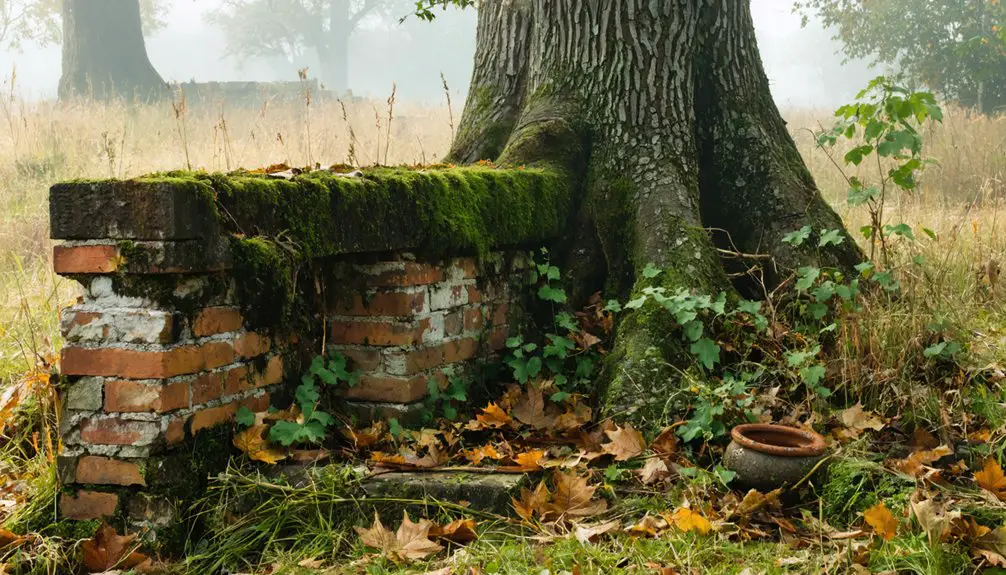
While most of Ca Ira’s buildings have vanished, Grace Church stands as the town’s enduring legacy thanks to dedicated preservation efforts since 1928.
You’ll find this architectural masterpiece blending Roman, Greek, and Gothic Revival styles with Jeffersonian influences, showcasing the craftsmanship of master builder Valentine Parrish.
The church’s historical preservation maintains essential links to Ca Ira’s past through:
- Annual homecoming services that keep the church active in the Episcopal Diocese
- A historic cemetery overlooking the Willis River with graves dating to 1880
- Protected status on both Virginia Landmarks and National Registers
You can experience this community legacy firsthand, as Grace Church continues to serve as a tangible connection between present-day residents and Ca Ira’s antebellum prosperity, offering insights into regional architectural traditions and local heritage.
Frequently Asked Questions
Were Any Notable Civil War Battles or Skirmishes Fought Near Ca Ira?
You won’t find any major Civil War battles near Ca Ira. While Virginia saw significant combat, this local region remained outside primary conflict zones, with battles concentrated around Richmond and Northern Virginia.
What Happened to the Descendants of Ca Ira’s Original Residents?
Like leaves scattered in autumn winds, descendant stories reveal through historical records that you’ll find Ca Ira’s families migrated to nearby Virginia towns seeking better economic opportunities after the Civil War’s devastation.
Did Ca Ira Have Its Own School System?
You won’t find evidence of an organized school system in Ca Ira’s history. Local education impact likely came through informal arrangements, as rural Virginia communities often relied on neighboring towns for schooling.
What Native American Tribes Previously Inhabited the Ca Ira Area?
You’ll find the Rappahannock tribe, part of the powerful Powhatan Confederacy, dominated this area along the river. With strong Algonquin influence, they shared territory with Pamunkey and Mattaponi peoples nearby.
Were There Any Documented Supernatural Legends or Ghost Stories About Ca Ira?
You won’t find any documented ghost sightings or haunted locations in Ca Ira’s historical records. Despite the town’s decline and abandonment, no supernatural legends or folklore have been preserved in written accounts.
References
- https://en.wikipedia.org/wiki/Ca_Ira
- https://en.wikipedia.org/wiki/Grace_Church_(Ca_Ira
- https://kids.kiddle.co/List_of_ghost_towns_in_Virginia
- https://theforgottensouth.com/union-level-virginia-ghost-town-history/
- https://www.dhr.virginia.gov/VLR_to_transfer/PDFNoms/024-0009_Grace_Church
- https://theforgottensouth.com/grace-episcopal-church-cumberland-virginia/
- https://www.dhr.virginia.gov/historic-registers/024-0009/
- https://kids.kiddle.co/Ca_Ira
- https://uncommonwealth.virginiamemory.com/blog/2013/05/22/tobacco-census-fixing-the-frauds-and-mischiefs-of-the-tobacco-trade/
- https://encyclopediavirginia.org/entries/tobacco-in-colonial-virginia/
